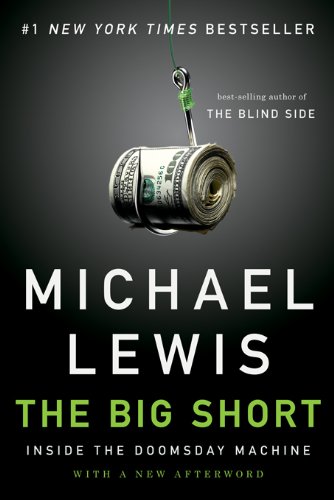

This article is an excerpt from the Shortform summary of "The Big Short" by Michael Lewis. Shortform has the world's best summaries of books you should be reading.
Like this article? Sign up for a free trial here .
Are you looking for The Big Short quotes by Michael Lewis? What are some of the most noteworthy passages worth revisiting?
At its heart, The Big Short is a tale about the perils of greed and short-sightedness. It exposes the true nature of modern capitalism and forces the reader to seriously question the wisdom of the financial elites who wield so much economic and political power in our society.
Here is a selection of The Big Short quotes with explanations to help you put them into context.
The Big Short: Inside the Doomsday Machine
In The Big Short, Michael Lewis takes us inside the madness, corruption, and greed at the heart of the 2007-2008 financial crisis. It tells the story of an eccentric collection of investors who saw the folly of the subprime mortgage-backed securities market—and found a way to bet against it. By focusing on individuals who saw these securities for what they truly were, the author forces us to seriously question the wisdom (and motivations) of the financial elites who wield so much power over our economy, society, and politics.
Here is a selection of The Big Short quotes by Michael Lewis.
“What are the odds that people will make smart decisions about money if they don’t need to make smart decisions–if they can get rich making dumb decisions? The incentives on Wall Street were all wrong; they’re still all wrong.”
According to Lewis, wrong incentives were at the heart of the subprime mortgage disaster at every level.
Borrowers had an incentive to borrow more than they could ultimately afford because they thought that (with ever-rising home prices) they would always be able to refinance and take out new loans to cover the old ones, using their homes as collateral. Lenders were motivated to shower uncreditworthy borrowers with cash because they knew that they would just be bundling the loans into subprime mortgage bonds and pass them off to other investors.
The ratings agencies, likewise, had every reason to give their blessing to the whole process because they were being paid by the big investment banks to do so. And, of course, the big banks themselves got bailed out by the federal government to the tune of $700 billion when the whole market collapsed.
“Complicated financial stuff was being dreamed up for the sole purpose of lending money to people who could never repay it.”
Lewis asserts that it is the sheer complexity of the mortgage-backed securities is that enabled the risk from subprime mortgage bonds and CDOs to spread like wildfire throughout the financial system. No one seemed to understand how these convoluted financial products worked or how to properly evaluate what they were truly worth. Even the big investment banks themselves were confused as to how much of these toxic assets they actually owned.
“Subprime mortgage lending was still a trivial fraction of the U.S. credit markets—a few tens of billions in loans each year—but its existence made sense, even to Steve Eisman. “I thought it was partly a response to growing income inequality,” he said. “The distribution of income in this country was skewed and becoming more skewed, and the result was that you have more subprime customers.”
Before the crisis hit, subprime mortgage lending, which bore the characteristically euphemistic name of “specialty finance,” represented a small fraction of the total U.S. credit market. However, as Lewis points out, it was an expected development in response to the nation’s growing income inequality. A more skewed income distribution created more and more potential subprime borrowers.
“The market might have learned a simple lesson: Don’t make loans to people who can’t repay them. Instead it learned a complicated one: You can keep on making these loans, just don’t keep them on your books. Make the loans, then sell them off to the fixed income departments of big Wall Street investment banks, which will in turn package them into bonds and sell them to investors.”
The fact that subprime loans weren’t recorded contributed to widespread degradation of lending standards across the mortgage industry. The subprime lenders weren’t keeping the loans on their books. Through mortgage bonds, the loans they had issued to risky borrowers could be bundled, packaged, and sold off to other investors. Any risk of default would be their problem.
———End of Preview———

Like what you just read? Read the rest of the world's best summary of "The Big Short" at Shortform . Learn the book's critical concepts in 20 minutes or less .
Here's what you'll find in our full The Big Short summary :
- How the world's biggest banks contributed to the 2008 financial crisis, greedily and stupidly
- How a group of contrarian traders foresaw the bubble popping, and made millions from their bets
- What we learned from the 2008 crisis - if anything






